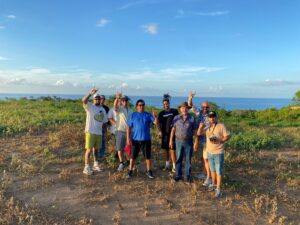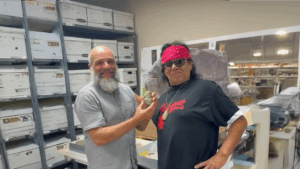Akwesasne citizens oppose the decision by their elected leaders to accept a $70 million payout for Barnhart Island. They argue that the island, despite some contamination from industrial activity, is in better environmental condition compared to other parts of their land impacted by former GM, Reynolds Metals, and Alcoa sites.
Despite colonial borders dividing their territory, the Akwesasne community spans Kawehno
in Ontario, Kana
and Tsi Snaihne in Quebec, and the Saint Regis Mohawk Territory in New York, all of which face a shared legacy of industrial pollution that has poisoned their lands and waters.
For decades, both the Mohawk Nation and a New York utility company have laid claim to Barnhart Island. The New York Power Authority asserts ownership of the island, but Akwesasne citizens challenge this, particularly after a 2022 U.S. federal court ruling that New York unlawfully acquired Mohawk land in the 1800s.
The dispute over Barnhart Island is part of a larger history of dispossession and environmental degradation. The opening of the Moses-Saunders Power Dam on the St. Lawrence River in 1958 flooded vast areas of Akwesasne territory, displacing citizens without consultation or compensation. The dam enabled the rapid industrialization of the region, attracting companies like GM, Reynolds Metals, and Alcoa, which polluted local waterways with toxic chemicals until the 1980s. These sites were later designated as Superfund locations by the Environmental Protection Agency, tasked with cleaning some of the most contaminated land in the U.S.
Despite the closure of GM’s plant in 2009, hazardous waste, including polychlorinated biphenyls (PCBs), continues to threaten the health of Akwesasne lands. Although Reynolds and Alcoa paid nearly $20 million in 2013 to aid environmental remediation, the damage remains.
The history of Akwesasne is deeply entwined with colonial geopolitics and industrial expansion. After the American Revolution, the 1783 Treaty of Paris established the U.S.-Canada border, placing Barnhart Island within British territory. However, subsequent treaties between 1816 and 1845 eroded Mohawk land claims, leaving the Akwesasne community with only fragmented areas in New York, Quebec, and Ontario.
Today, the Akwesasne people continue to negotiate with multiple governments over land claims, resource rights, and environmental protections, while defending their remaining territories, such as Barnhart Island, from further encroachment and degradation.








